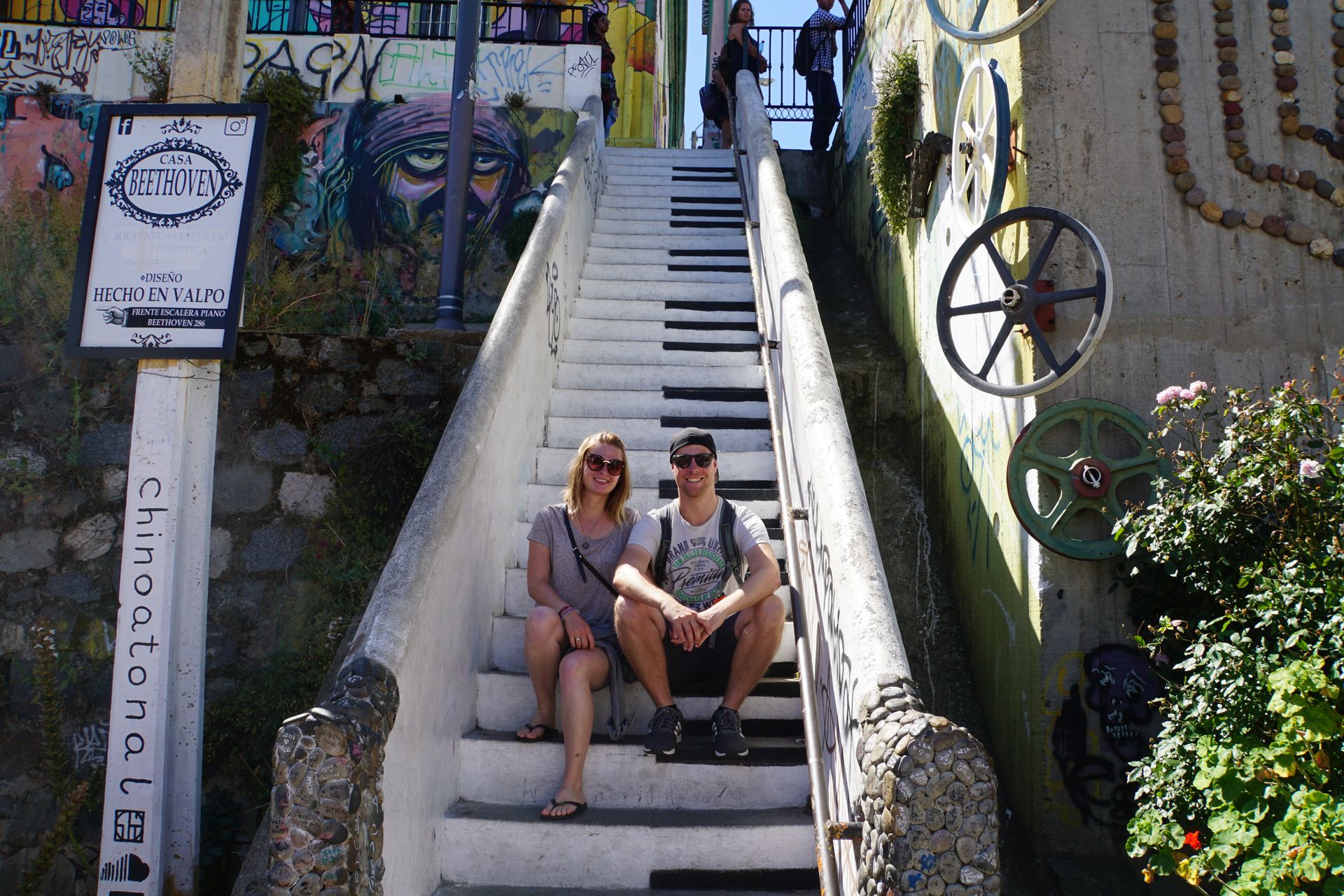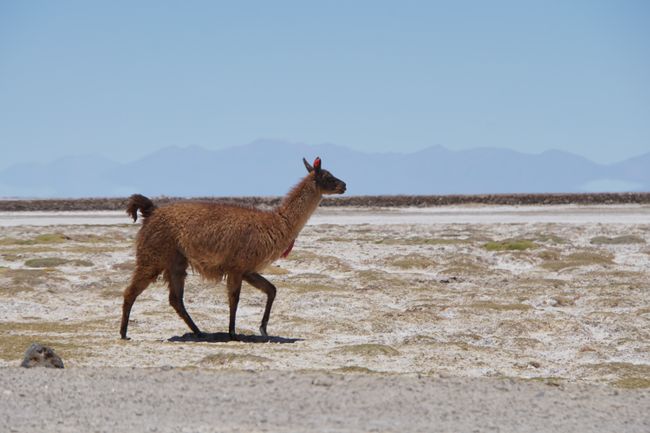Ho Chi Minh City and Cu Chi Tunnels
Objavljeno: 12.04.2019

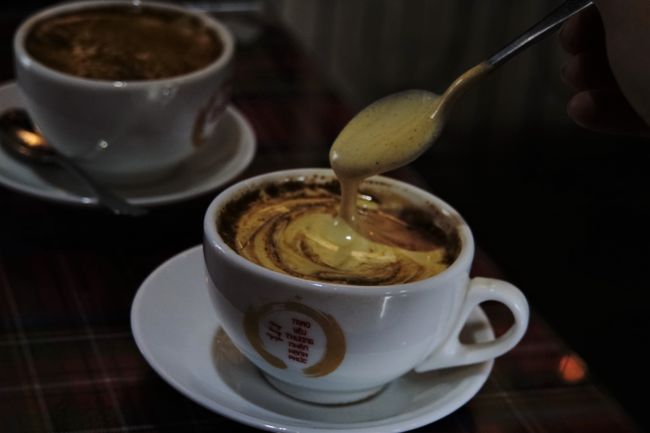
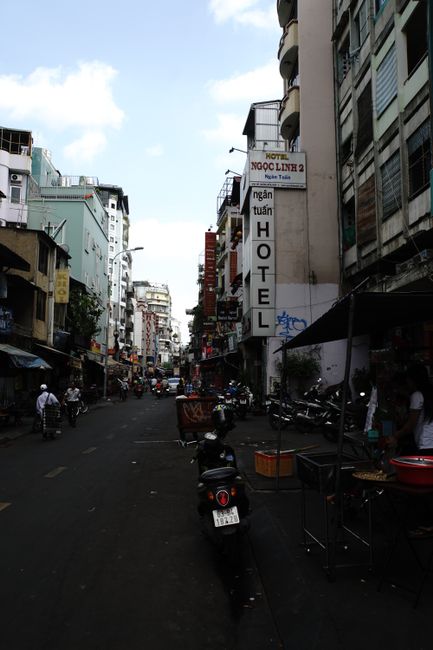
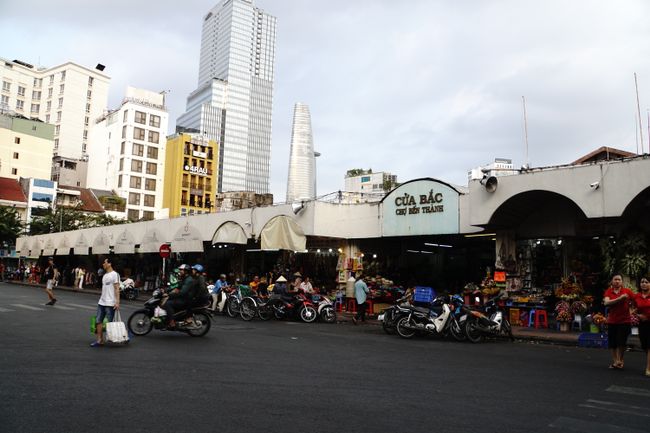
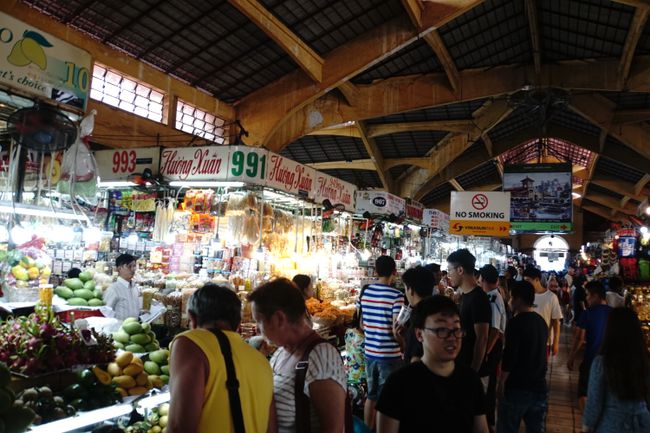
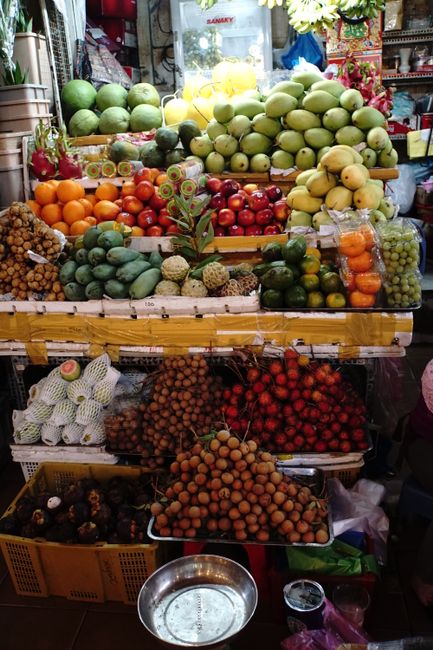
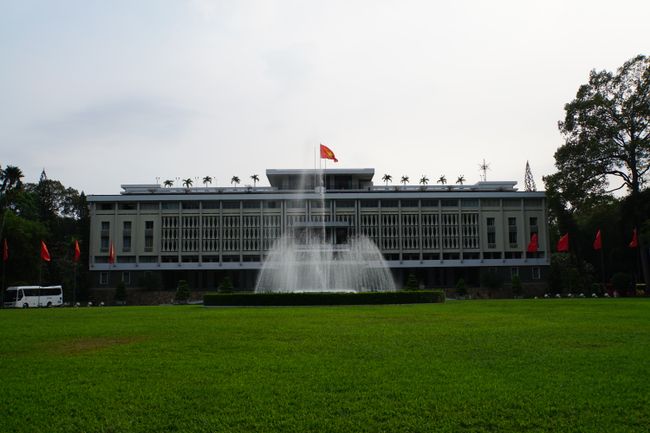
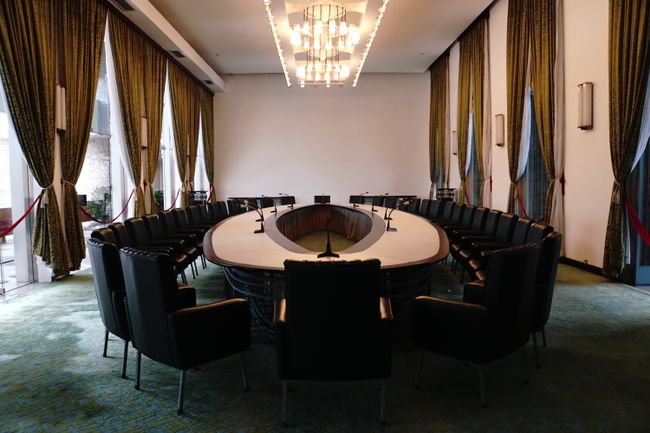
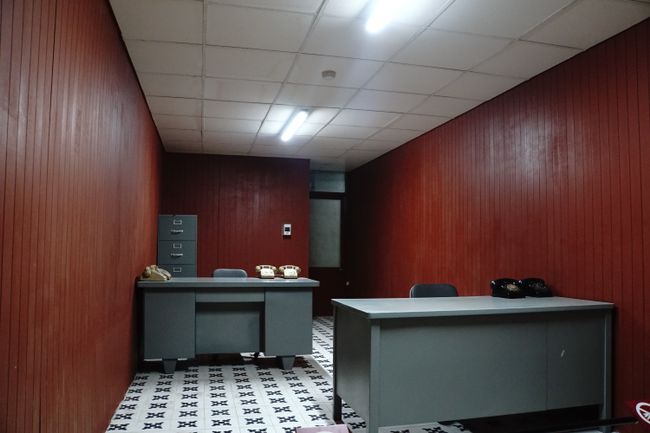
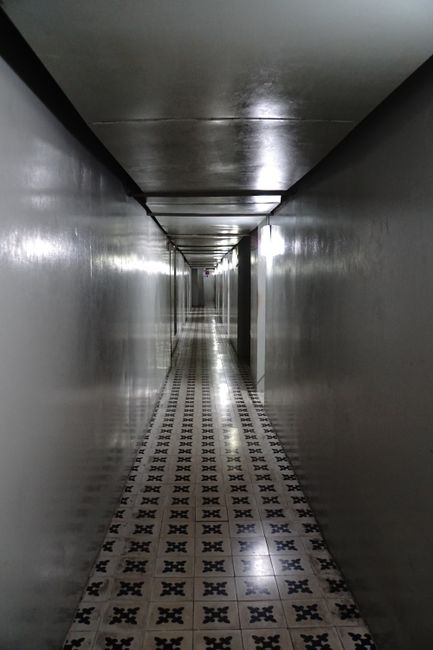
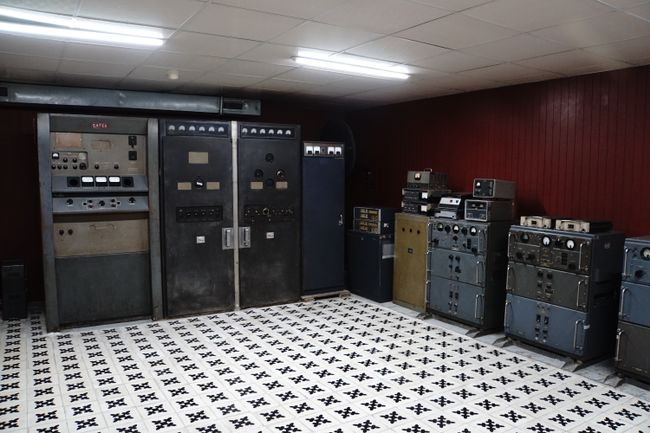
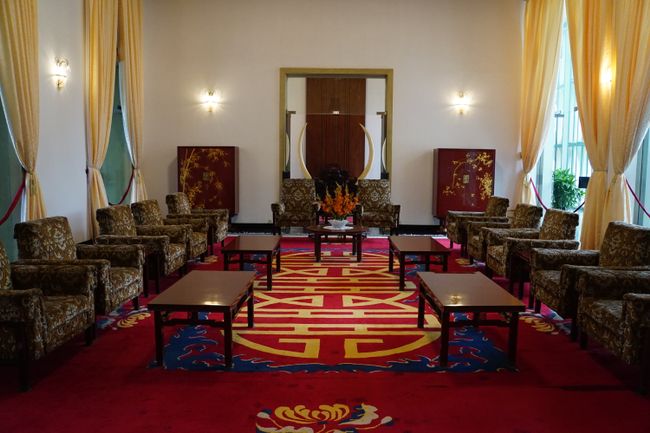
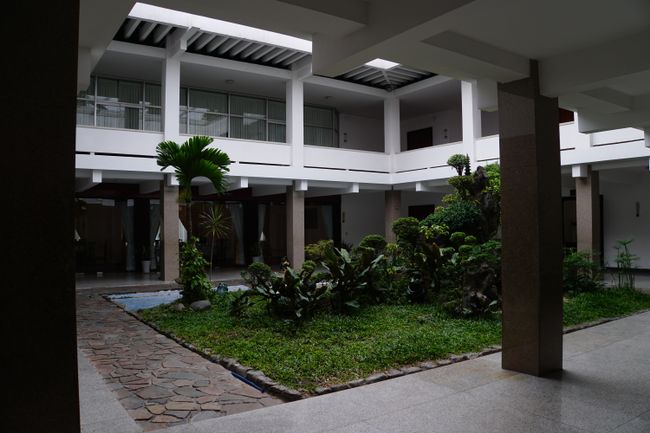
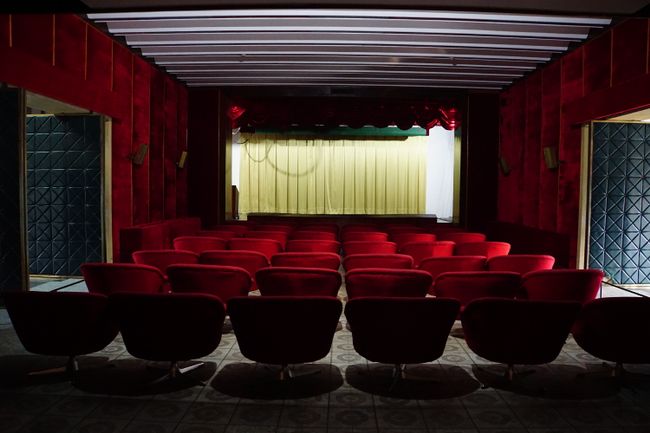
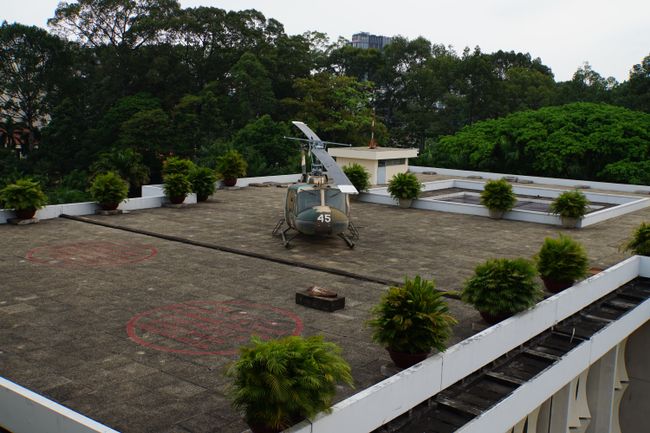
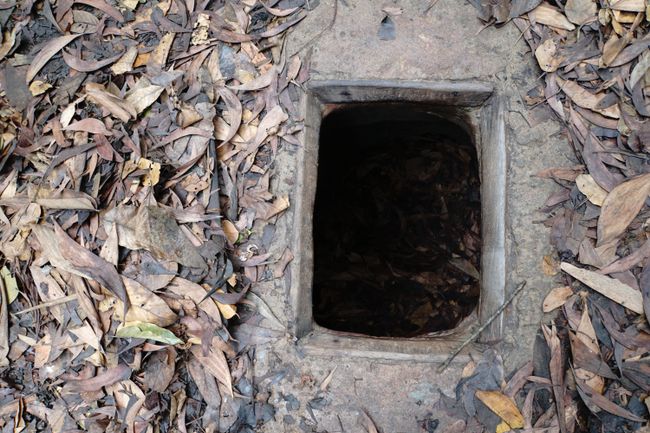
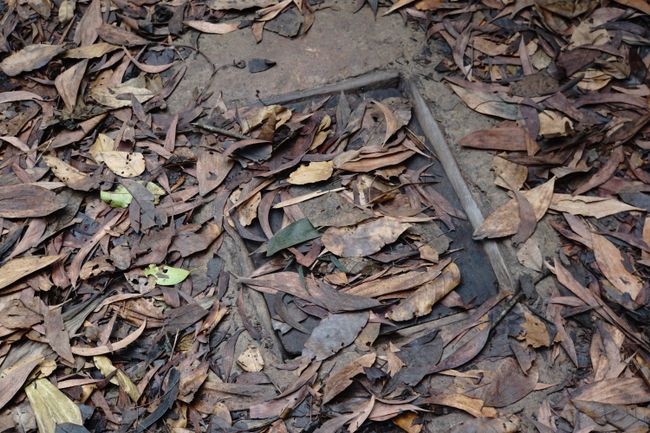
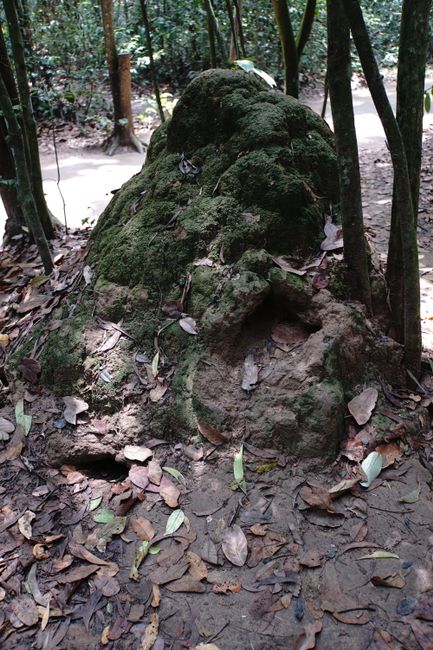
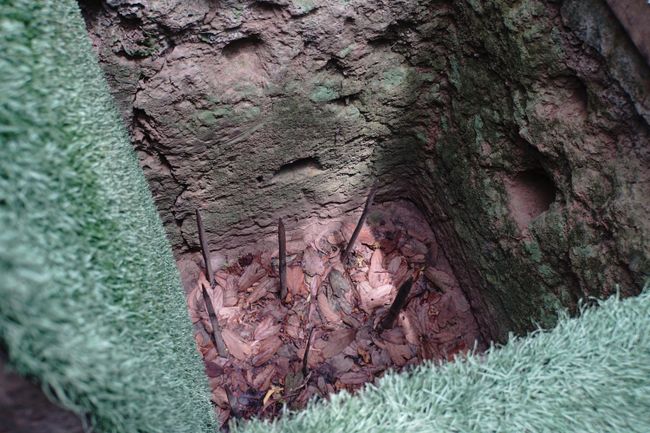
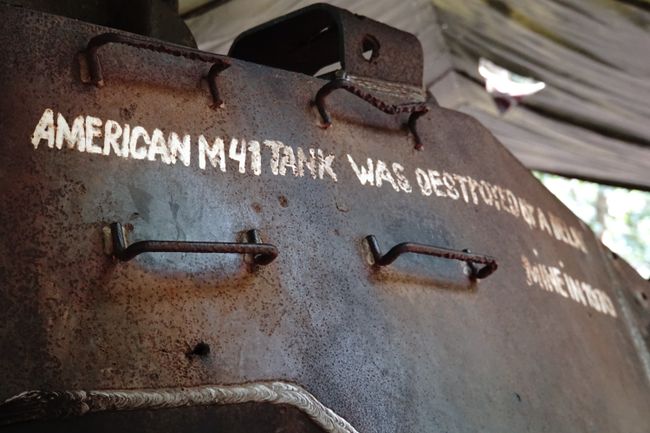
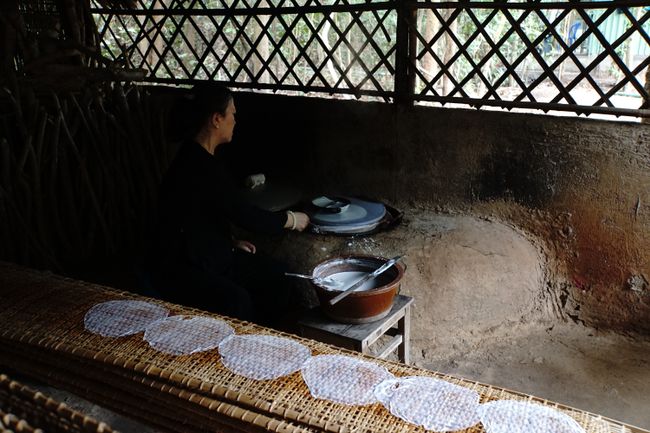
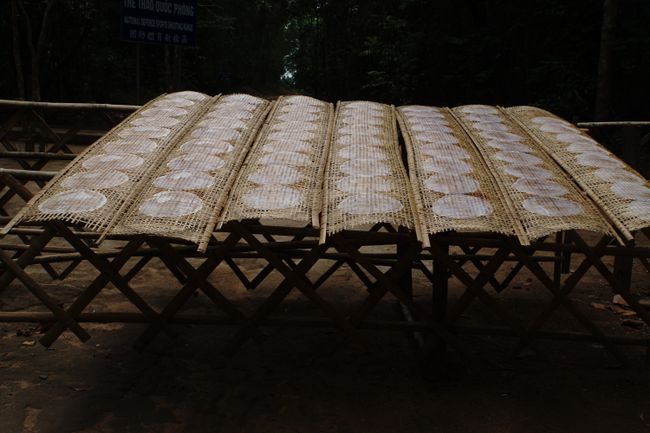
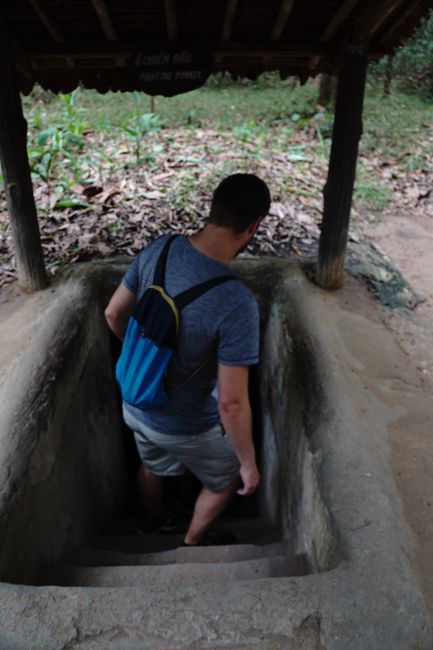
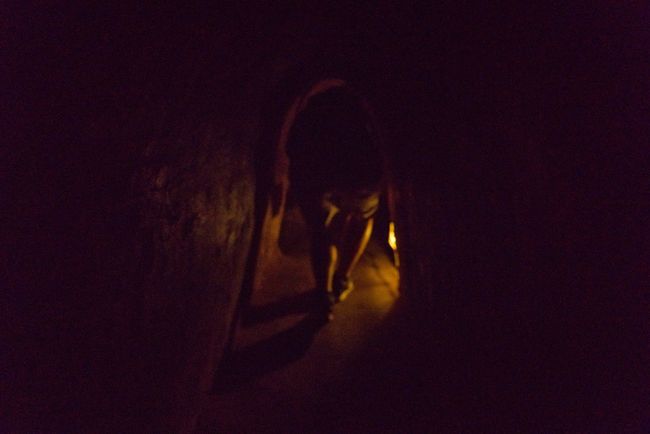
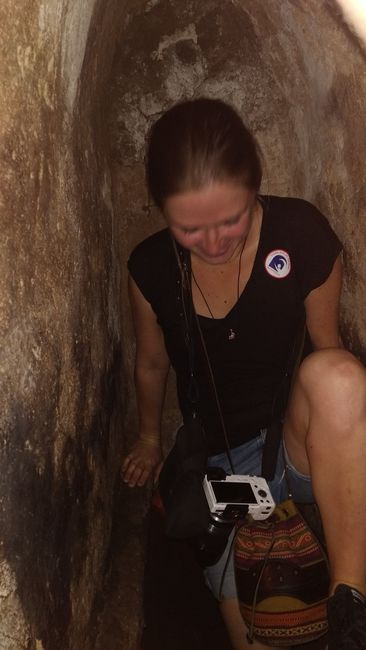
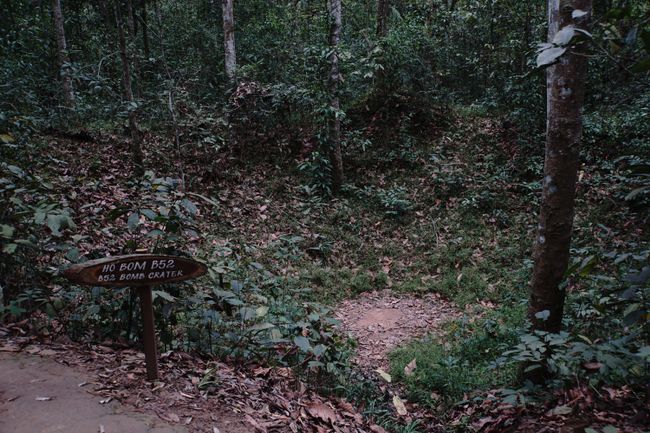
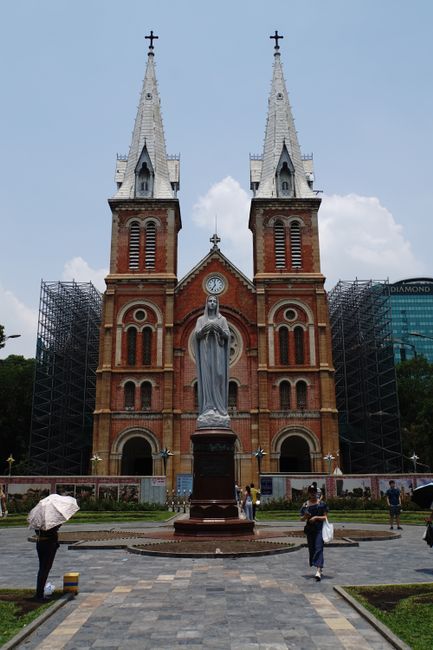
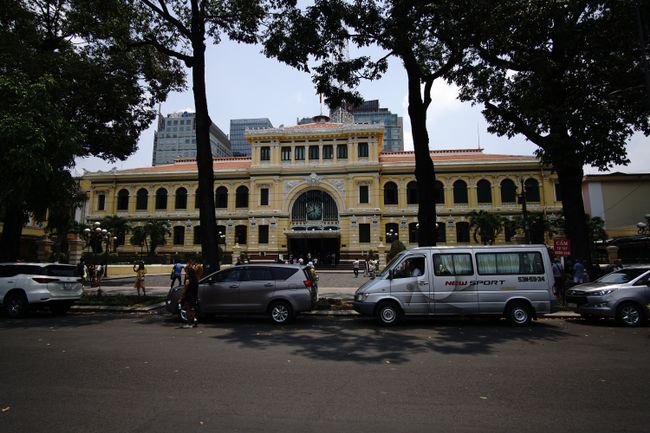
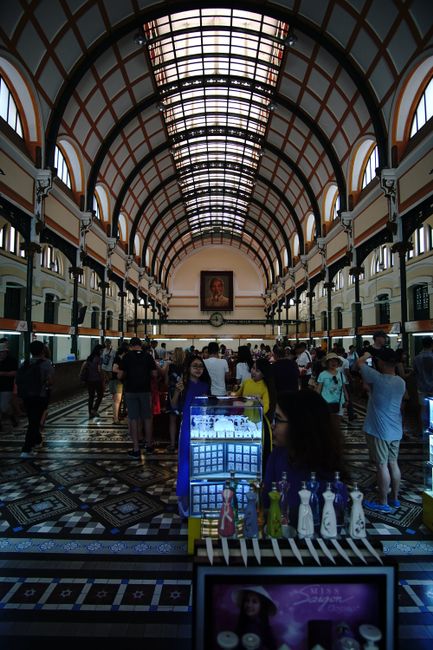
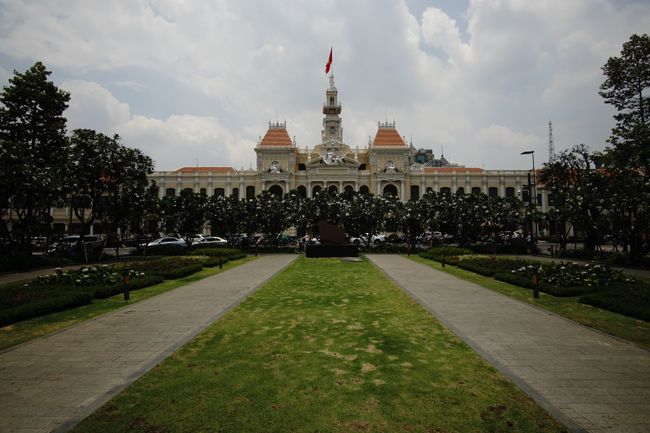
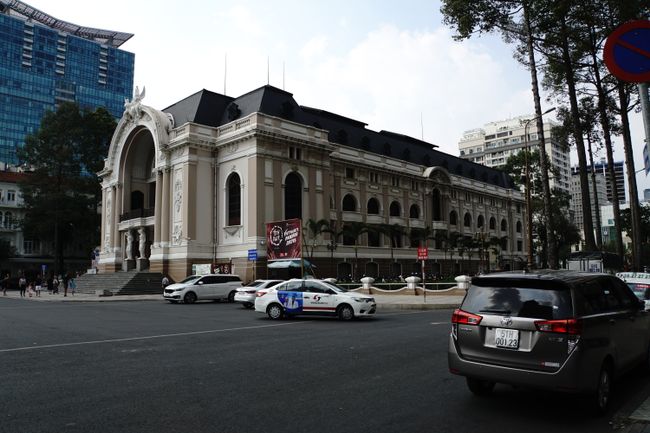
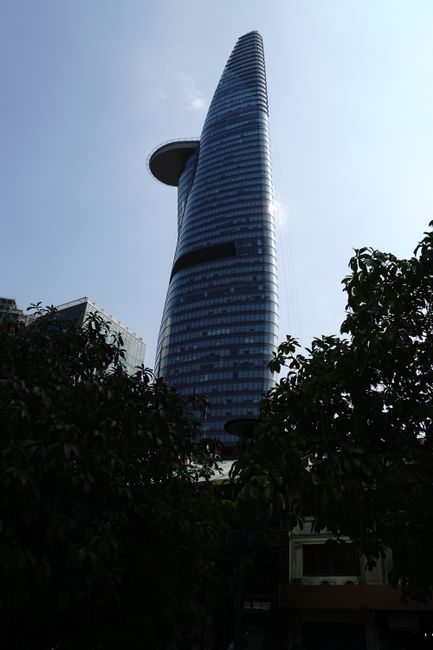
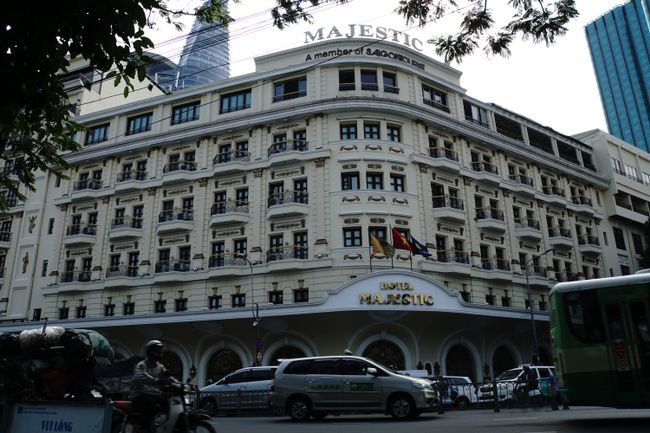
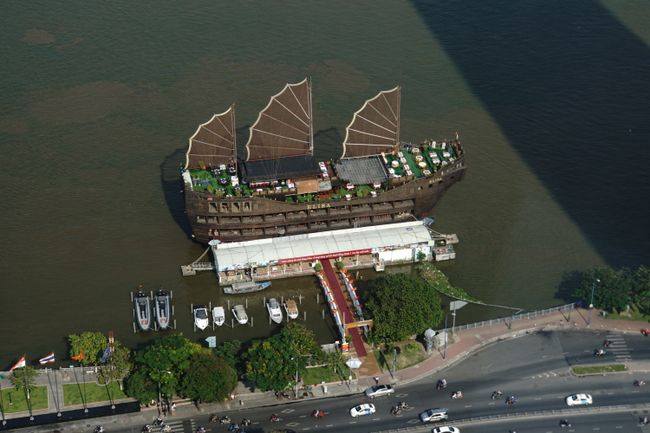
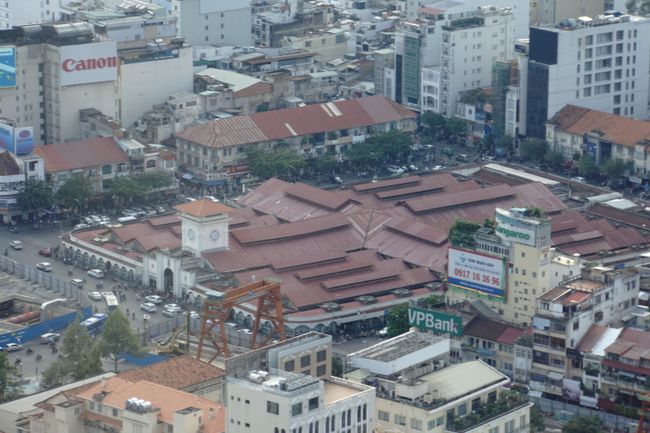
Naročite se na glasilo
We arrive in the evening in Ho Chi Minh City and take the airport shuttle to the hostel. Formerly known as Saigon (still often referred to by the locals), it is the largest city and the economic center of Vietnam with over 8 million inhabitants. This is evident from the completely chaotic traffic. Allegedly, there are more motorbikes than residents in Ho Chi Minh City. The 8 million inhabitants are said to own around 9 million scooters - a rough first impression confirms this.
We take it easy the next morning, sleep in and update the blog. For lunch, we go to a nice little café just around the corner. In Góc Hà Nội-Little Egg Café, we have a delicious sandwich and an Egg Coffee, which the café is famous for. The egg coffee is the best we've had here in Vietnam so far. It has a very thick, fluffy egg foam on top of the strong coffee, which is not overly sweetened with condensed milk. Delicious!

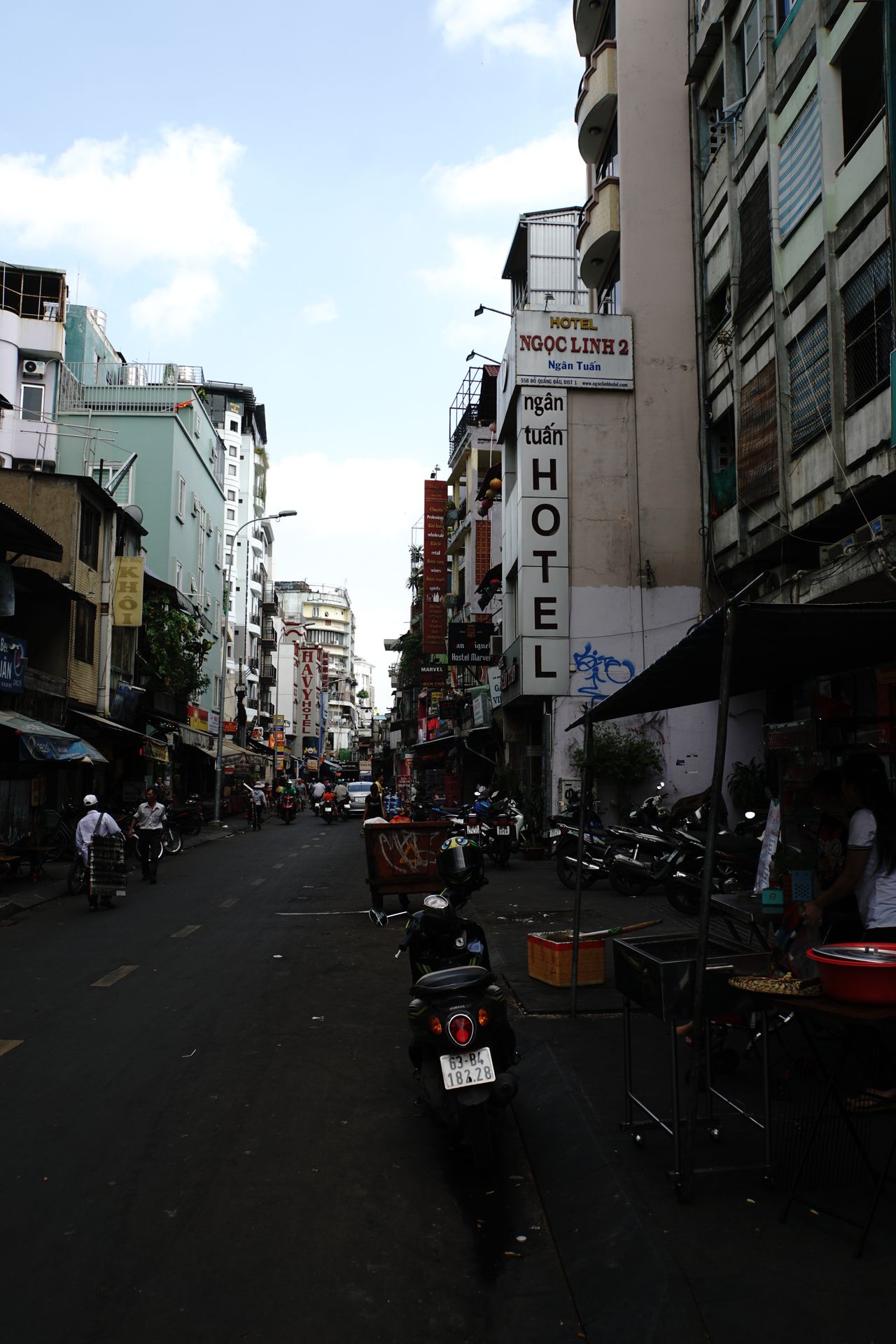
Afterwards, we simply start walking and explore the city on foot. The first place we come to is Bến Thành Market. Here, you can buy everything your heart desires: groceries, household items, and clothing. After strolling through the market for 20 minutes, we head back outside as it is stuffy and hot inside the market hall. Generally, it is several degrees hotter in Ho Chi Minh City compared to Hanoi, and it was already not cold there. Well, at least we can start getting used to the heat because it won't get cooler in the next few days!

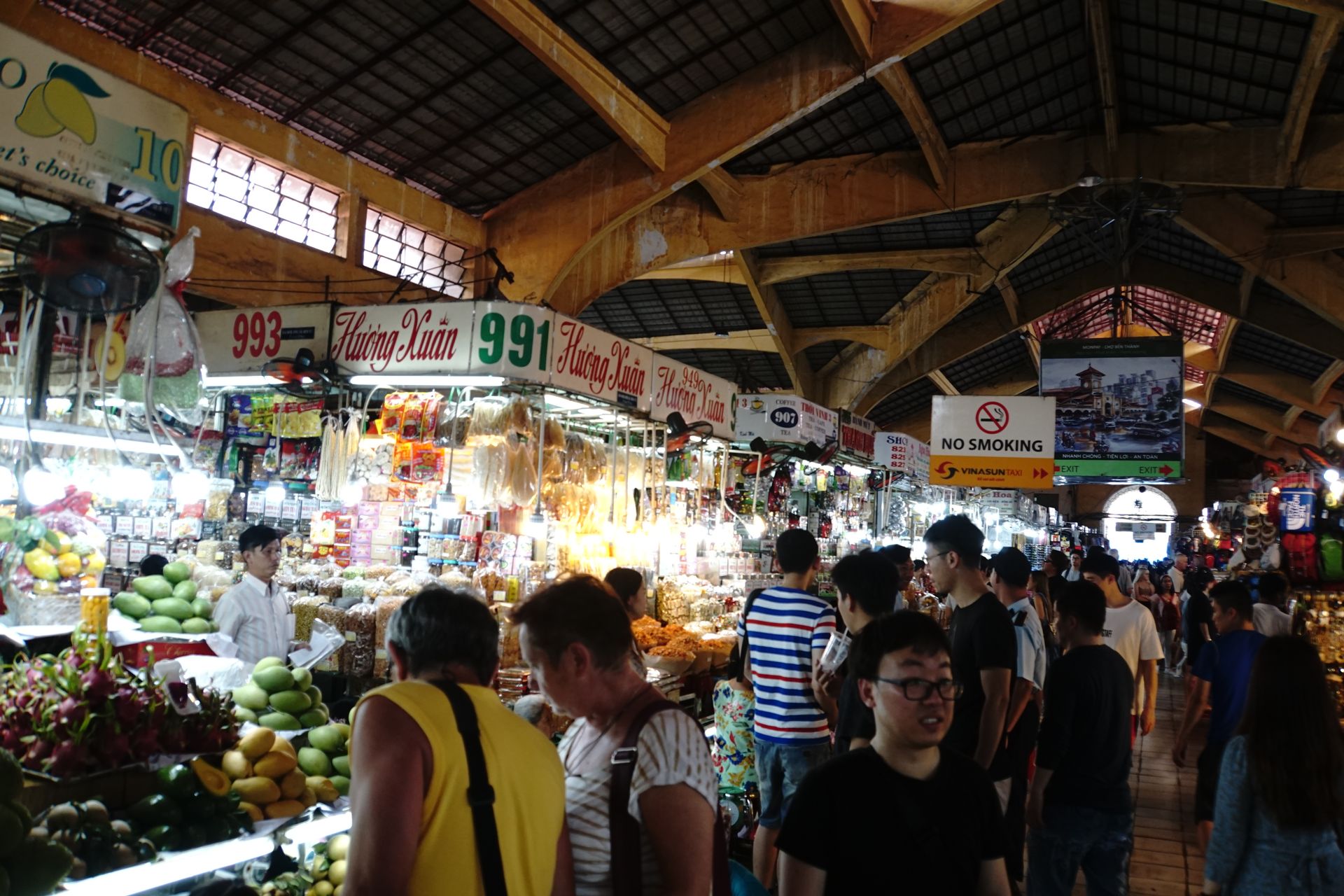
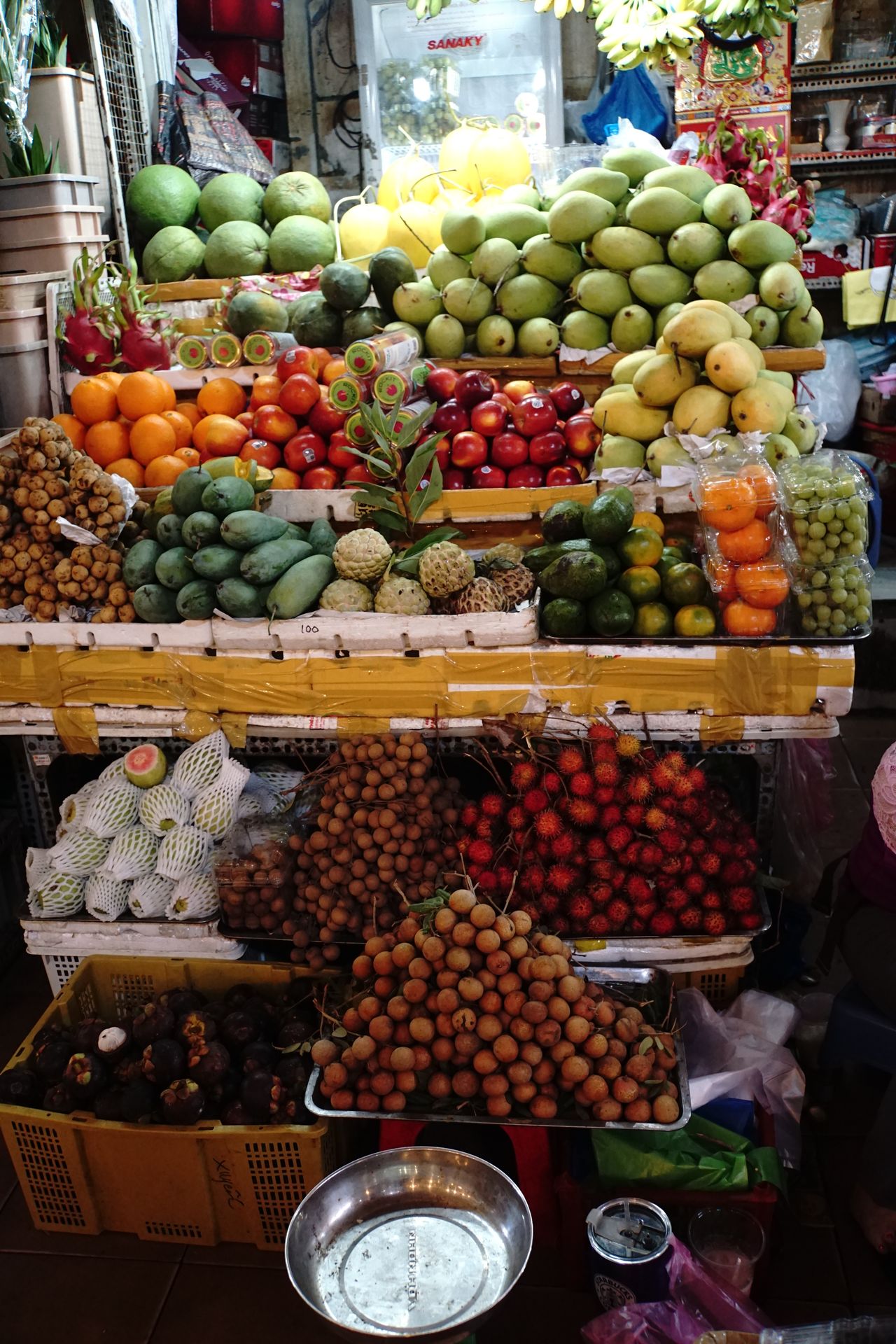
Only two blocks away from the market is the Reunification Palace, one of the main attractions of Ho Chi Minh City. It used to be the Norodom Palace built by the French colonial rule, completed in 1873 and later serving as the government headquarters and residence of the first president of the (South) Vietnamese Republic. The Norodom Palace was destroyed by bombings in 1962. The first president of the Republic of Vietnam, Ngô Đình Diệm, survived the attack, had the palace demolished, and built the Independence Palace in its place (he did not live to see its completion as he was killed in a coup in 1963). Since 1975, the palace has been called the Reunification Palace, as it was here in that year that the end of the Vietnam War was sealed.
To better understand the blog post, we would like to give a brief overview of Vietnam's recent history. We do not guarantee that the explanations here are complete and absolutely objective, but rather we want to better contextualize our impressions from various museums and tunnels. After all, this part of recent history has largely passed us by, as we are too young to have experienced it ourselves and too old to have learned about it in history class:
In the 19th century, Vietnam gradually fell under French colonial rule. Around 1941, Ho Chi Minh (1890-1969) founded the Viet Minh with the aim of achieving Vietnam's independence from France. During World War II, Japan occupied Vietnam and cooperated with the French colonial power against the Viet Minh. After Japan's surrender, France sought to restore colonial rule in Vietnam. This led to the Indochina War, which took place from 1946 to 1954. The Battle of Điện Biên Phủ in 1954, which the Viet Minh won, inflicted significant losses on the French forces and ended the Indochina War, leading to peace negotiations. Later that year, the division of Vietnam was decided, and the communist politician Ho Chi Minh became Prime Minister of the socialist state of the Democratic Republic of North Vietnam, and the nationalist and anti-communist Ngô Đình Diệm was appointed Prime Minister of the Republic of South Vietnam. Free elections were originally agreed upon for 1956 throughout Vietnam at the Geneva Conference. However, since South Vietnam was not represented at the conference, Prime Minister Ngô Đình Diệm refused to hold free elections and had himself elected President of South Vietnam in a manipulated election in 1955. He was supported by the United States, who felt threatened by the communist leadership of North Vietnam. In the view of the United States, communism ideologically sought world domination, and the communist regime in Vietnam would trigger a chain reaction in neighboring countries, ultimately threatening the United States (this is known as the domino theory, which can be read about on Wikipedia). Diệm subsequently received financial support from the United States, which he used to build the Army of the Republic of Vietnam instead of investing the funds in social and economic goals. As a result, South Vietnam became increasingly dependent on consumer goods from the United States. Furthermore, US military advisors were sent to South Vietnam, which increased the influence of the United States. Diệm, a Catholic, also had many high-ranking and influential positions filled by family members and started a brutal campaign against actual and perceived political opponents.
In 1960, the National Front for the Liberation of South Vietnam (NLF or Vietcong) was formed from the Viet Minh and other groups, with the main goals of forcing the withdrawal of US military advisors, overthrowing Ngô Đình Diệm, and pursuing a politically neutral course between the power blocs.
Diệm's unpopularity among the population continued to grow. For example, due to the forced relocation of mountain villages, whose vacant land was mostly handed over to Catholic followers. The displaced residents of the mountain villages were then motivated by the Vietcong to rebel, and armed resistances were called for. Diệm also managed to alienate the Buddhists by banning the Buddhist flag. In the eyes of the population, Ngô Đình Diệm was considered a ruthless puppet of the West due to his dictatorial domestic policies. Gradually, he antagonized all relevant groups in South Vietnam and responded with arrests and executions. In 1963, a military coup took place, and Ngô Đình Diệm was killed while fleeing with his brother. After Diệm's death, the United States promised support to South Vietnam against any communist aggression, and this was followed by the gradual entry of the United States into the war in South Vietnam. North Vietnam was supported by the People's Republic of China and the Soviet Union, which is why the Vietnam War is also considered a proxy war between the directly and indirectly involved superpowers. In 1973, a ceasefire agreement was reached between the United States and North Vietnam, and by 1975, North Vietnamese troops had completely conquered South Vietnam, ending the war.
We can only shake our heads at this senseless and so confusing war.
Back to our experiences: In the evening, we enjoy a delicious dinner before saying goodbye to Ho Chi Minh City. We have learned a lot about Vietnam's past and can now better understand many things. Our trip to Cu Chi and the city tour have been worthwhile for this reason. Tomorrow morning, we will embark on a three-day journey through the Mekong Delta to Cambodia. Here, we hope to experience the wonderful landscape and vibrant culture of Vietnam once again.
Naročite se na glasilo
Odgovori
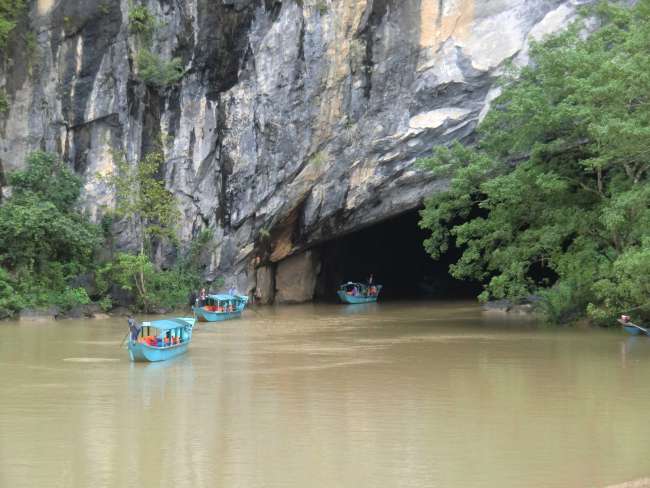
Poročila o potovanjih Vietnam
